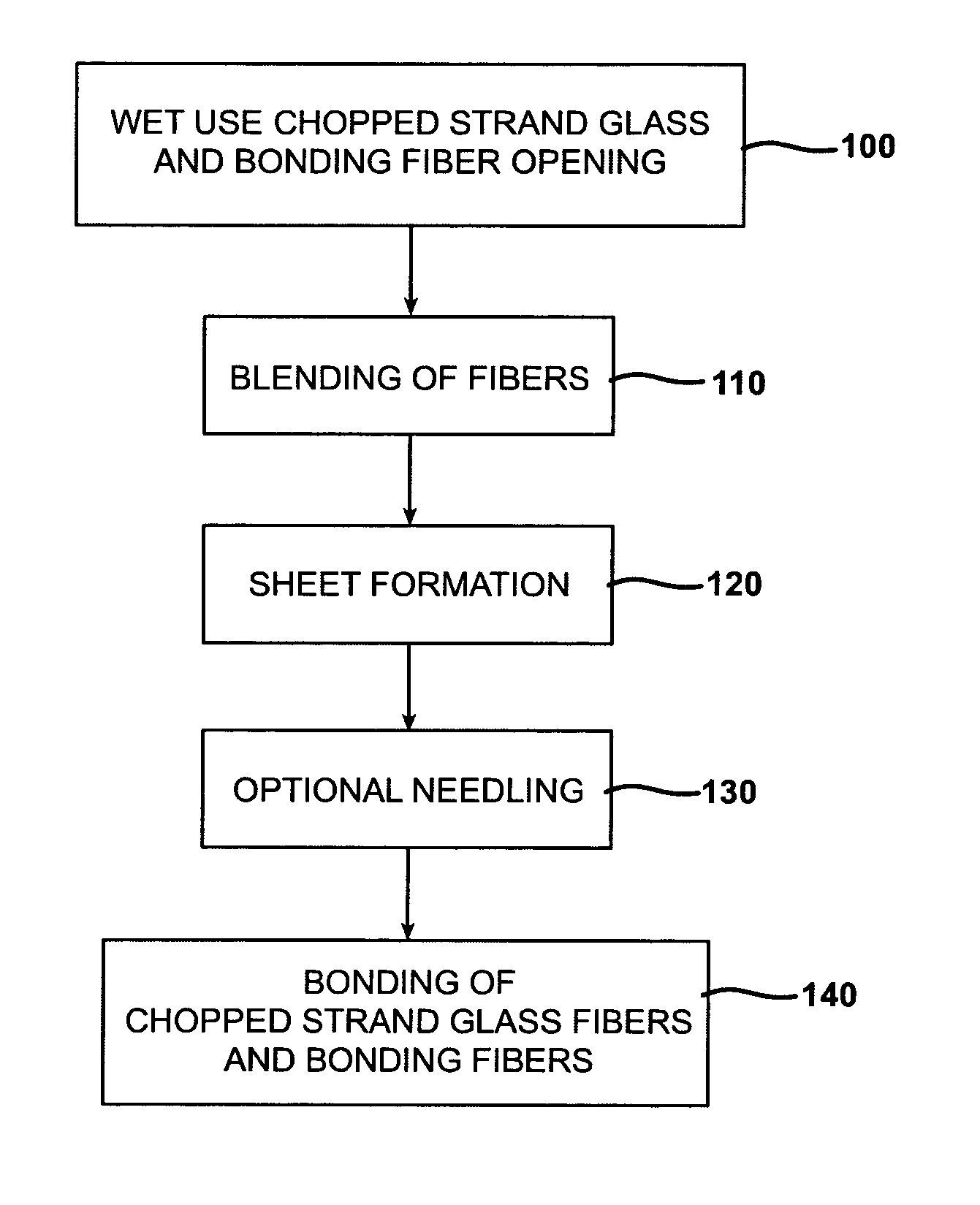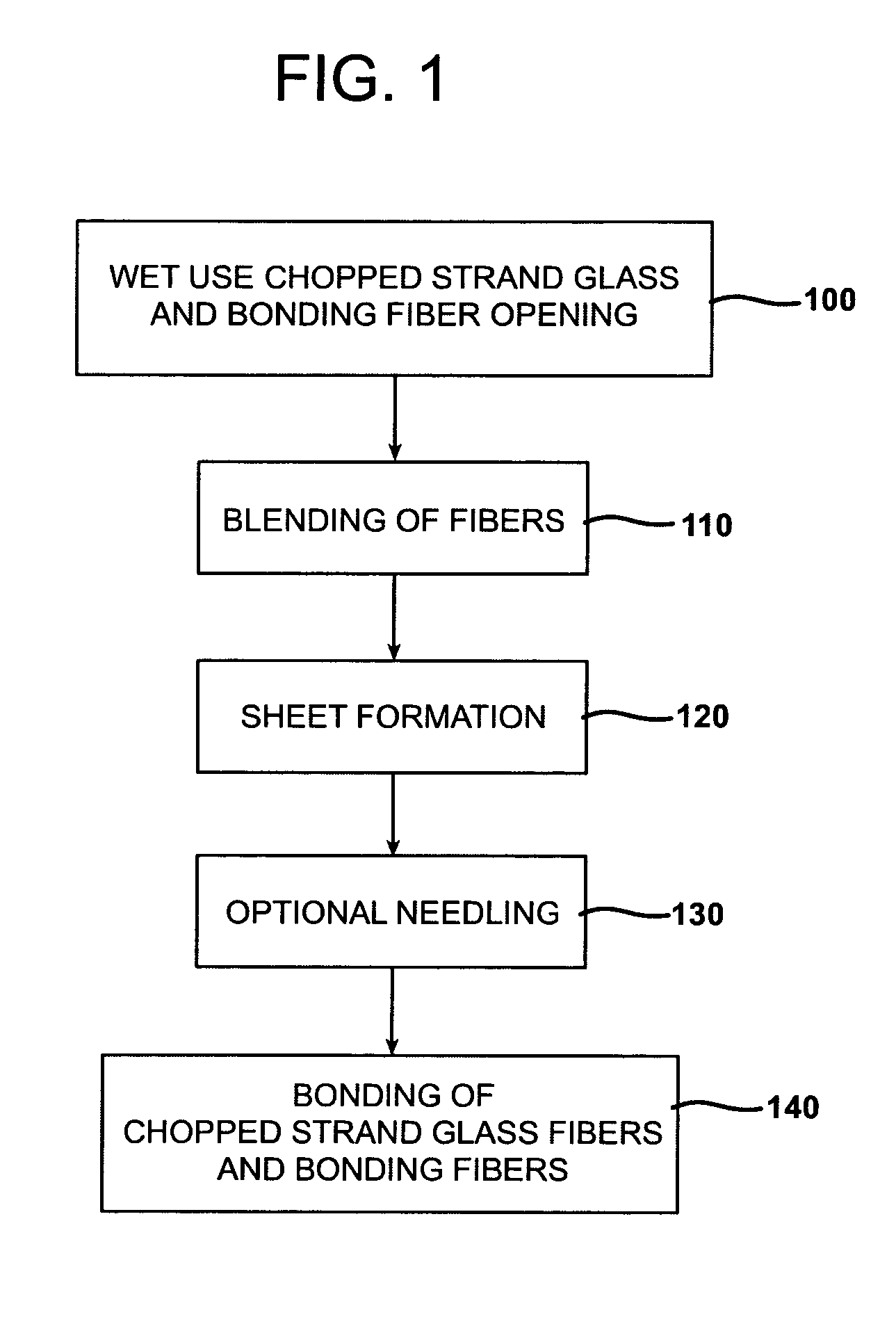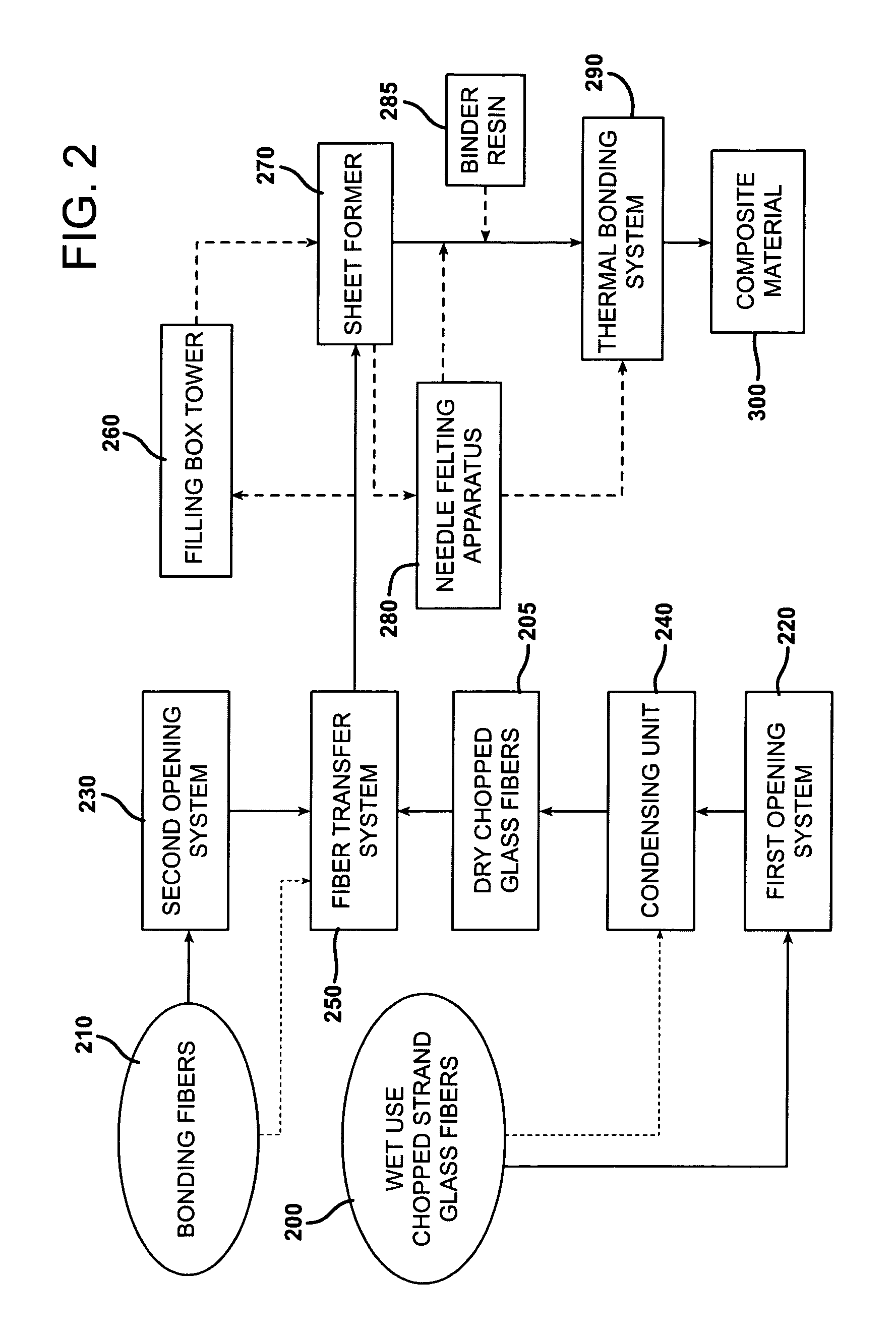Glass/polymer reinforcement backing for siding and compression packaging of siding backed with glass/polymer
a glass/polymer and siding technology, applied in the field of siding products, can solve the problems of reducing the “r”-rating of the siding system, affecting the overall thermal properties of the building, and vinyl or metal siding has very little insulative properties, so as to improve the physical properties of the composite material, improve the acoustical and thermal properties, and improve the strength. the effect of the composite material
- Summary
- Abstract
- Description
- Claims
- Application Information
AI Technical Summary
Benefits of technology
Problems solved by technology
Method used
Image
Examples
example
[0061] Impact Resistance
[0062] A composite material composed of glass fibers and polyethylene terephthalate according to the principles of the instant invention was formed and attached to vinyl siding to form a siding product. The siding product was then tested according to the procedures set forth in ASTM D4226, Procedure A (incorporated herein by reference in its entirety) and compared to conventional vinyl siding and vinyl siding backed with an expanded polystyrene. The inventive siding product and conventional siding products were cut to form flat specimens of at least 0.75 inches wide. The individual specimens were placed on a base below an impact head of an Impactor with a head configuration of H.25. The depth of the penetration is the distance the Impactor head protrudes into the support plate when properly seated. In the H.25 configuration, the depth of penetration is 0.48 inches ±0.04 inches. An 8 pound weight was then raised to various heights and allowed to fall onto the...
PUM
| Property | Measurement | Unit |
|---|---|---|
| lengths | aaaaa | aaaaa |
| lengths | aaaaa | aaaaa |
| length | aaaaa | aaaaa |
Abstract
Description
Claims
Application Information
 Login to View More
Login to View More - R&D
- Intellectual Property
- Life Sciences
- Materials
- Tech Scout
- Unparalleled Data Quality
- Higher Quality Content
- 60% Fewer Hallucinations
Browse by: Latest US Patents, China's latest patents, Technical Efficacy Thesaurus, Application Domain, Technology Topic, Popular Technical Reports.
© 2025 PatSnap. All rights reserved.Legal|Privacy policy|Modern Slavery Act Transparency Statement|Sitemap|About US| Contact US: help@patsnap.com



